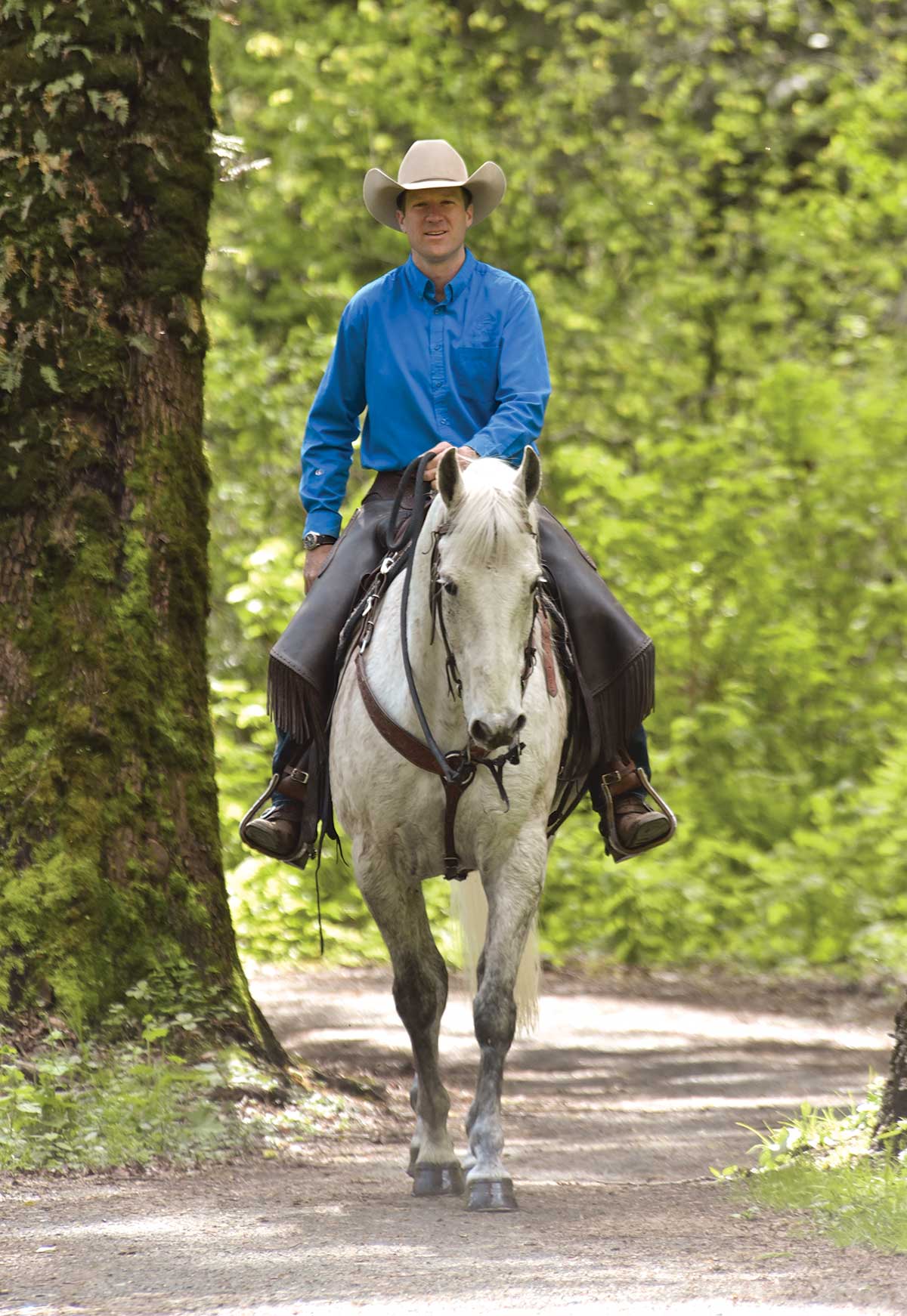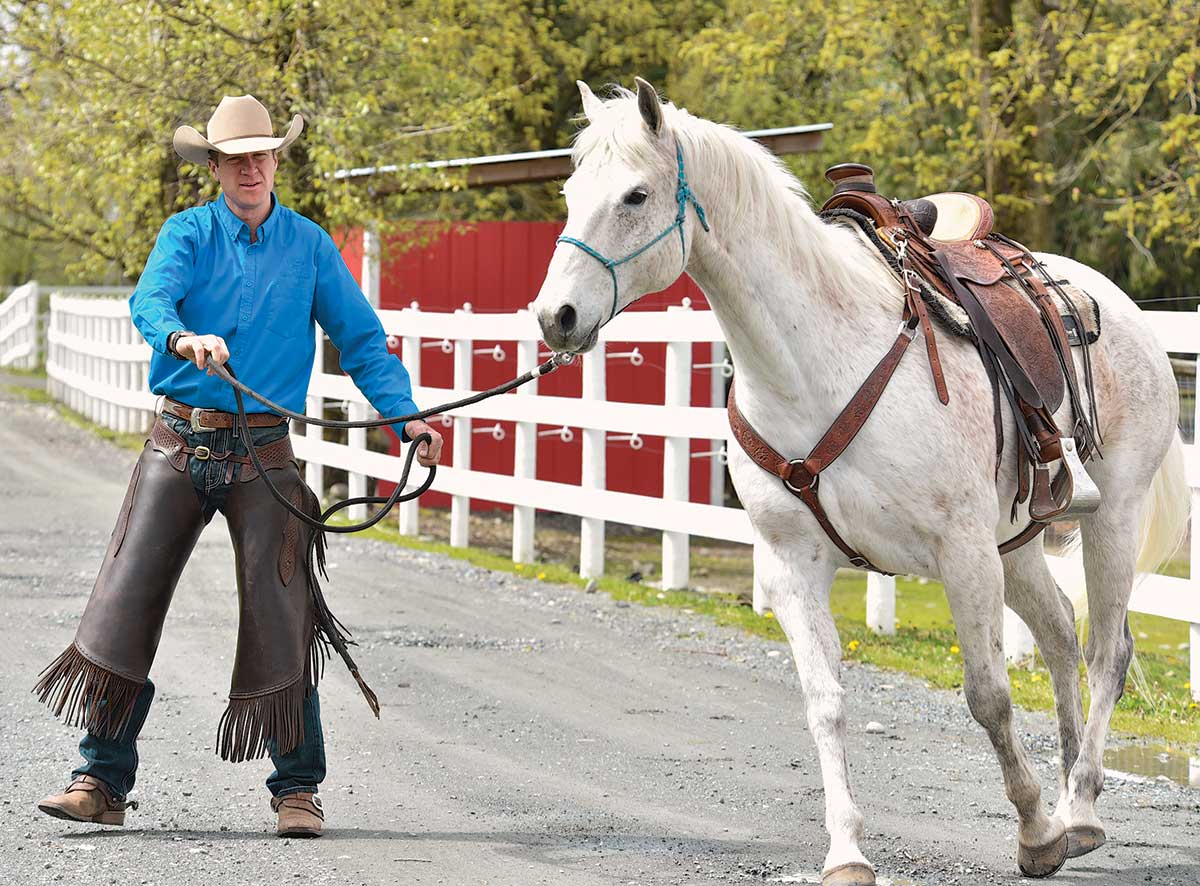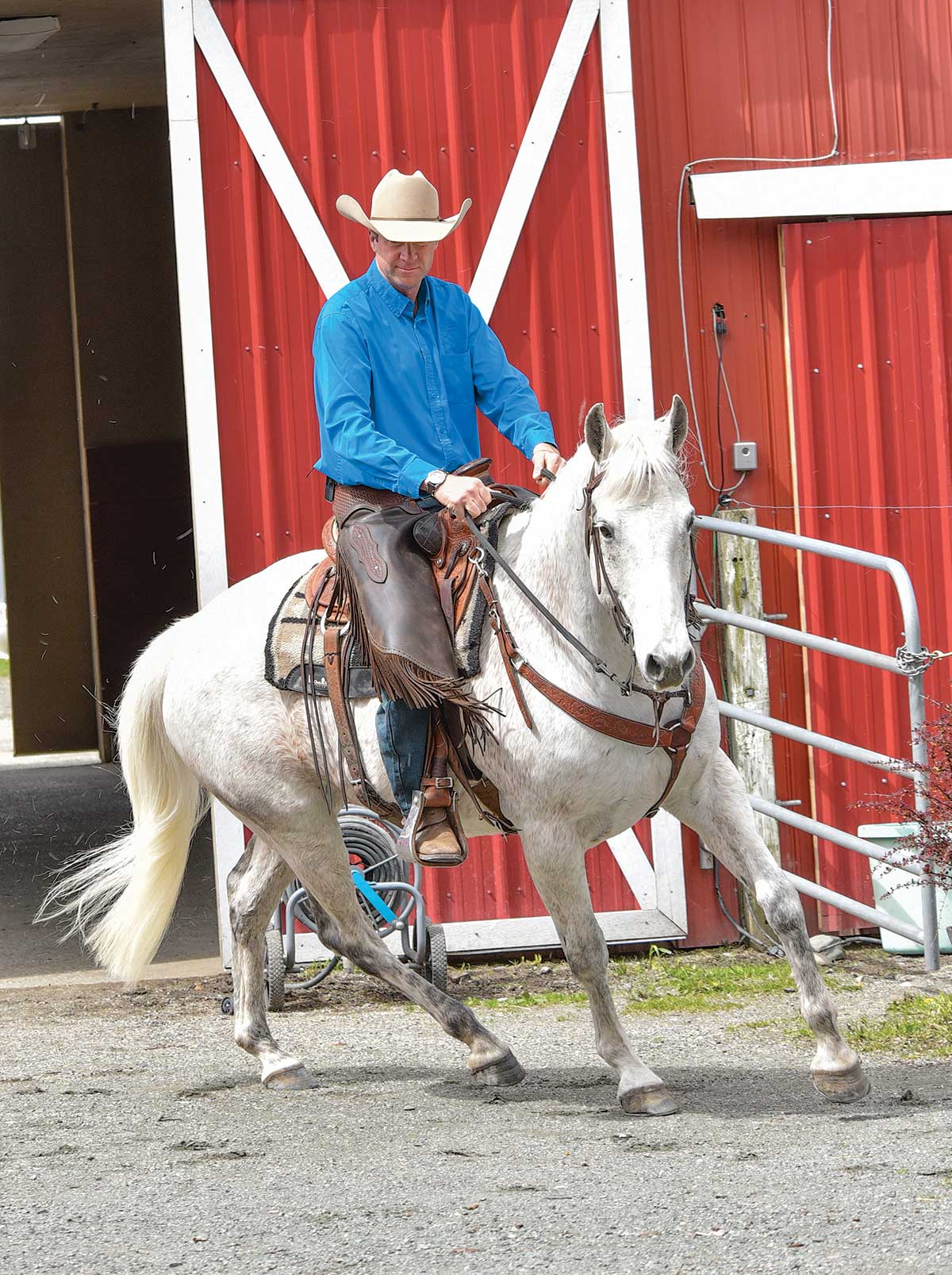
If you’re like most horse people, you’ve encountered a balky horse or two. When it happens, though, do you know what’s causing the behavior and how to handle it? There are actually various causes of balkiness, each requiring a different approach.
Using insight I’ve gleaned from working with countless horses at clinics, I’ll explain the different forms of balkiness I’ve identified, explore what causes the behavior, and show you how to overcome it. Physical pain can cause a reluctance to move, but once a veterinarian has ruled that out, there are three key types of balkiness—herd-bound, lack of confidence, and rider-induced.
I’ll discuss each in turn.
Herd-Bound
Behavior: Your horse resists leaving the barn or a herdmate. He hates moving away from things he enjoys or finds comfort in. At some point during a ride, he may plant his feet and refuse to be ridden any farther from the place or horse he’s drawn to. Even if he doesn’t completely plant his feet, he may walk slower going away from home than he does returning home, even zigzagging to try to linger there. It may even be difficult to control his speed on the way home, a danger connected to this type of balkiness.
Cause: His mind and attention remain at home even though he’s being ridden physically away from home. He’s so preoccupied with staying home or returning there that any ride you do get from him will be difficult and potentially dangerous.
Solution: Gain his respect and focus his attention on you, and therefore away from his stall, pen, or equine companion. Before even attempting to leave home with a herd-bound balky horse, do groundwork or mounted exercises, such as circles and footwork movements. These will get his attention on you and and away from his source of preoccupation.
Once he’s tuned in, keep a focused, purposeful demeanor and immediately ask him to leave his comfort zone. Too much of a pause will allow his mind to wander back to his stall, feed, or stablemate. If he still resists, repeat some of the exercises and immediately ask again for him to leave the area. Be deliberate, firm, and patient, as this may take several repetitions.
Success will be measured in how readily your horse moves away from his home zone, how long he keeps his focus on you once away, and whether he can maintain his focus and an even pace on his way back. It’s natural for horses to want to return home at a slightly brisker pace than they maintained when leaving, but your horse shouldn’t ignore your cues. In the end, if you’ve adequately focused his attention, he’ll be “with you” regardless of where you are.
Save some riding time for when you return to the barn or your unsaddling area, so he’s not expecting to be immediately untacked, groomed, and allowed to relax. This can be done in an arena, around the property, or even in front of the barn, as long as he knows arriving home doesn’t mean instant release from everything you did that day.
Rule Out Health Problems
Balkiness in horses is commonly caused by pain. If your horse balks, explore this angle first by testing him for soundness and having a thorough examination by a veterinarian. A few of the many potential physical causes include:
• Sore back, ill-fitting saddle
• Sore joints
• Stomach ulcer
• Neurologic issues
• Dental issues
Once a veterinarian has ruled out pain, then proceed with handling the balkiness as a behavior issue.


Lacking Confidence
Behavior: Your horse resists moving toward a scary spot in an arena (such as a flag or banner) or on the trail (such as a bridge or a railroad crossing). He’s balking because he lacks confidence. He plants his feet or tries to move away from what he fears.
Cause: As prey animals, horses naturally fear many things. Staying away from anything suspicious—whether it’s a sight, sound, or scent—is how they stay alive in nature. Unfortunately, this innate fear can become an overall lack of confidence under saddle that ruins rides. Overcoming it requires getting the horse to trust that your judgment will keep him safe.
Solution: Whether you’re in the arena or on the trail, your approach is the same. First, find how near the scary thing your horse will approach willingly and confidently. Then stop him and wait a few moments, allowing him to take a look. Then ask with a light squeeze or bump of your legs until he takes a step forward, or even just “thinks” forward. When he does, release the pressure for a moment. Then ask again. Each step forward will build to more steps.
The key here is patience and timing to build his trust in you so he feels confident going where you want. Too often, riders add high pressure with a flurry of kicks when the horse is thinking “backward” from the challenge. This causes a horse to resist even more, and if really pressured, he may begin to rear and run backward.
Instead, be persistent and carefully time your releases of pressure with each step forward. Once successfully past the trouble spot, go back and forth by it several times to establish success and build trust for the next attempt to pass something spooky.

Rider Error
Behavior: Your horse is dull, lazy, and hard to get moving in the arena—and for seemingly no reason. In this case, pilot error could be to blame. Many horses don’t go forward freely because of the way they’re ridden. If you give conflicting cues, time cues improperly, or attempt to micromanage your horse without giving him relief from pressure, he may simply resist moving at all.
Cause: Your overuse of aids is confusing your horse and denying him any relief or comfort. Some riders simultaneously pull on the reins and pester their horse with continuous squeezing or kicking. Then, in frustration, many attempt what I call “the one-whack solution.” This is accomplished with a forceful kick of the legs and/or spank with the reins or crop to get the horse to move out. Unfortunately, this just makes a horse suck back and resist even more—sometimes to the point of kicking out or bucking.
Solution: Teaching a balky horse to move freely through transitions forward is best done with a light squeeze of the legs and a light, rhythmic tapping with a riding crop. This tapping should slightly build in pressure until the horse gets going a bit faster. Make sure to persist until forward happens. Exactly at that moment, stop the squeeze and the tapping. If your horse slows down again, then simply repeat.
It’s best to travel on long, straight lines across an arena or large, open area. When you get across the arena or to the open area’s edge, stop and rest a moment, then ride straight back across. Continue like this until the horse is moving out freely and looking forward in the direction of travel.
The brief rest at each end point can really get a horse looking forward and moving out. I’ve helped hundreds of horse-and-rider combinations overcome this type of balkiness in a short time using this method. But do remember—this strategy works only if you make sure not to pull on the reins at the same time as using leg aids.
Jonathan Field, Vancouver, British Columbia, authored “Inspired by Horses,” a horsemanship program that teaches riders the skills and traits they need to be successful with their mounts (jonathanfield.net).






